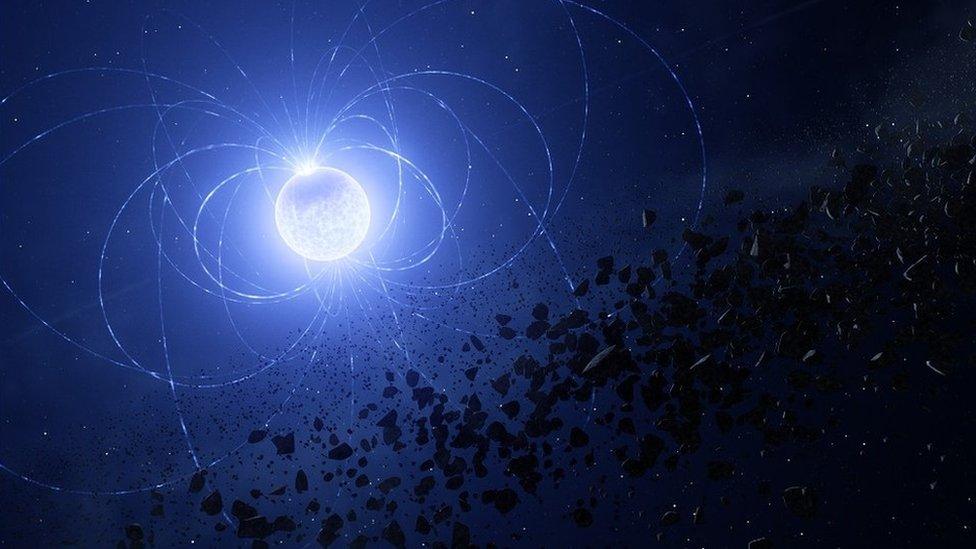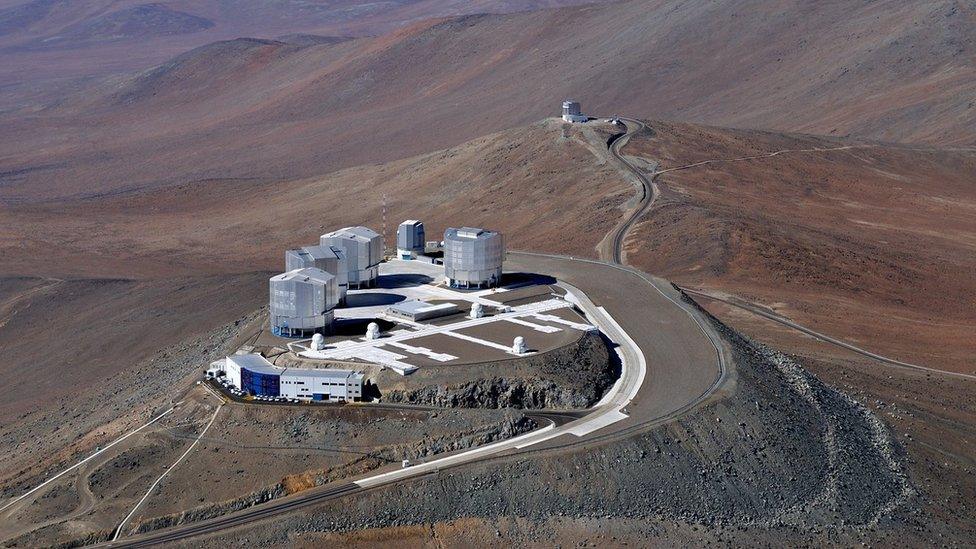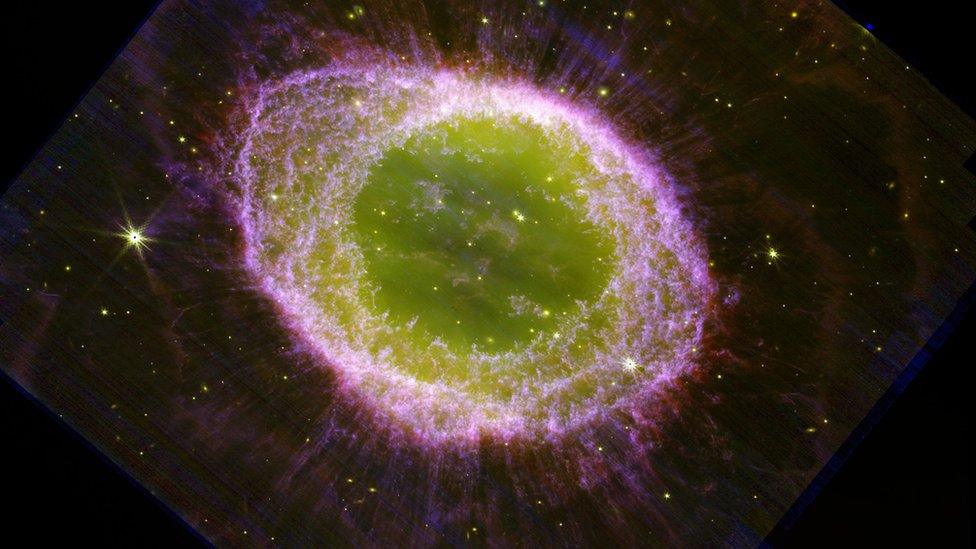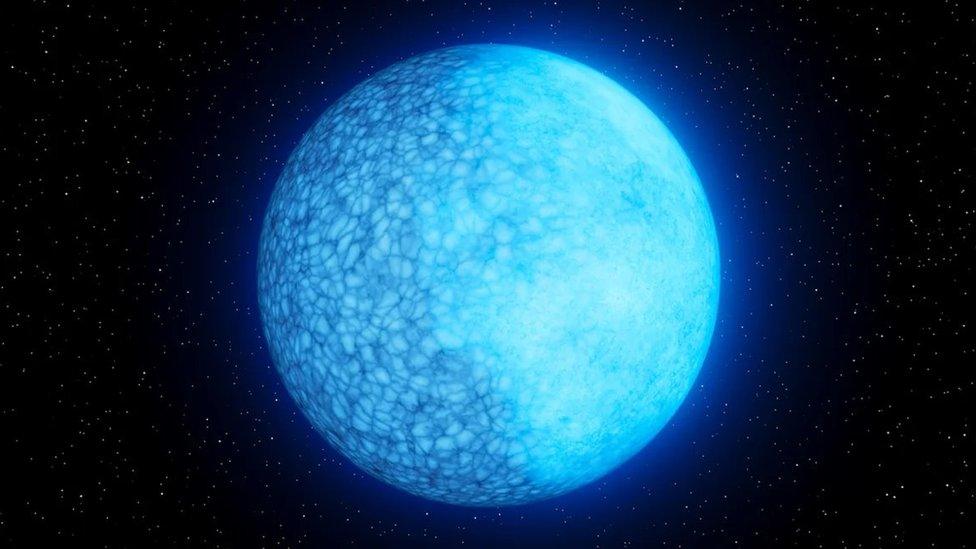White dwarf: Armagh astronomers say scar suggests star 'ate' planets
- Published

An artist’s impression of the magnetic white dwarf WD 0816-310 with a metal scar
Astronomers in Armagh have discovered a sign that a star feasted on nearby planets and asteroids.
A metal scar found on the dead star's surface had never been seen before, said astronomer John Landstreet.
It was discovered at the astronomical research centre in Armagh Observatory and Planetarium.
The scar, believed to be 500km (310 miles) long, was on an Earth-sized remnant of a star from a nearby solar system.
The system no longer creates energy at its core, so the star is dead.
The white dwarf star has been named WD 0816-310 by the researching astronomers.
Research found that the scar developed after white dwarf ingested the surrounding planets and asteroids which were born at the same time as it, causing a concentration of metals that scar the stars surface.
Dr Landstreet, co-author of the research paper, is a member of the team that discovered the first magnetic white dwarf in 1970.
"Surprisingly, the material was not evenly mixed over the surface of the star, as predicted by theory," he said.
"Instead, this scar is a concentrated patch of planetary material, held in place by the same magnetic field that has guided the infalling fragments. Nothing like this has been seen before."

What is a white dwarf?
A white dwarf is the burnt remains of a dead star - something our Sun will become in about five billion years.
When a star dies, gravity means heavier elements move toward the centre while lighter elements such as hydrogen or helium rise to the outer layer.
At their hottest, the stars will have hydrogen atmospheres, but as the stars cool over time they tend to have helium atmospheres.
But typical white dwarfs don't have one side of the star devoted to one element and the other dominated by another.

The research was conducted by an international team of scientists using the European Southern Observatory, external's Chile-based Very Large Telescope, external (VLT).
At 500km long, the scar is about the same size as Vesta - the second-largest asteroid in our solar system.

The research used the European Southern Observatory's Chile based Very Large Telescope (VLT)
Astronomers said the strength of the metal detection synced with changes observed in the star's magnetic field, which led the team to determine that the metal scar was located on one of the star's magnetic poles.
This showed the metals were funnelled on to the star by its magnetic field, creating the scar.
Stefano Bagnulo, astronomer at Armagh Observatory and Planetarium, said it was well known that some white dwarfs were cannibalising pieces of their planetary systems.
"Now we have discovered that the white dwarf's magnetic field plays a key role in this process, resulting in a scar on its surface," he said.
Related topics
- Published3 August 2023

- Published29 July 2023
